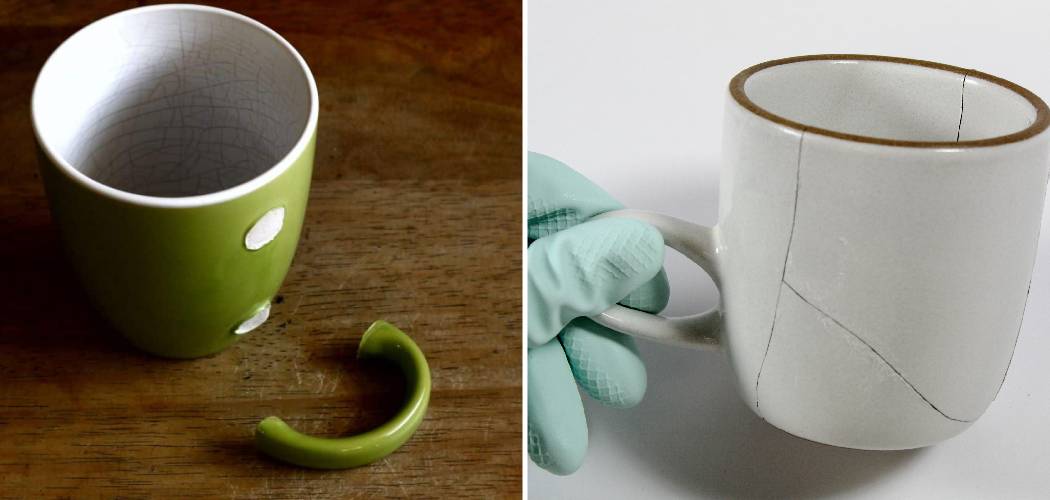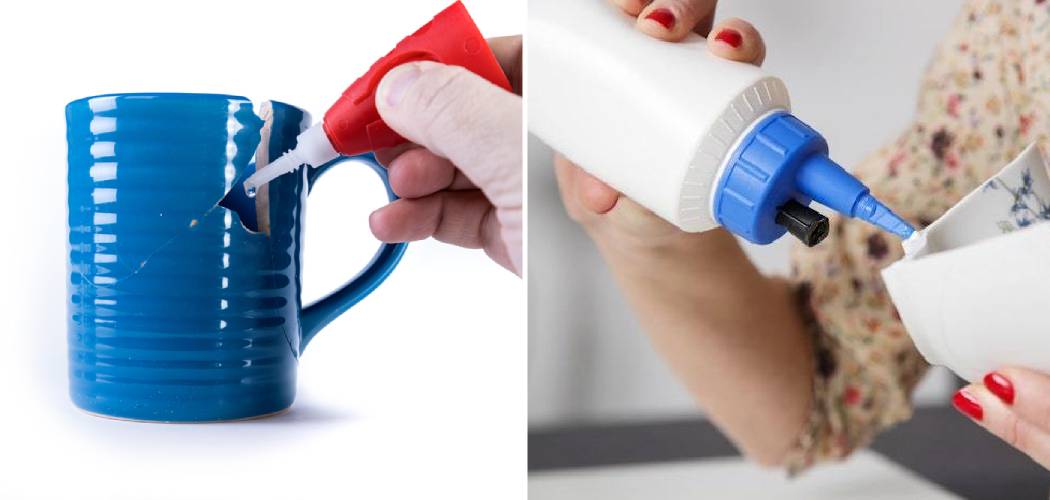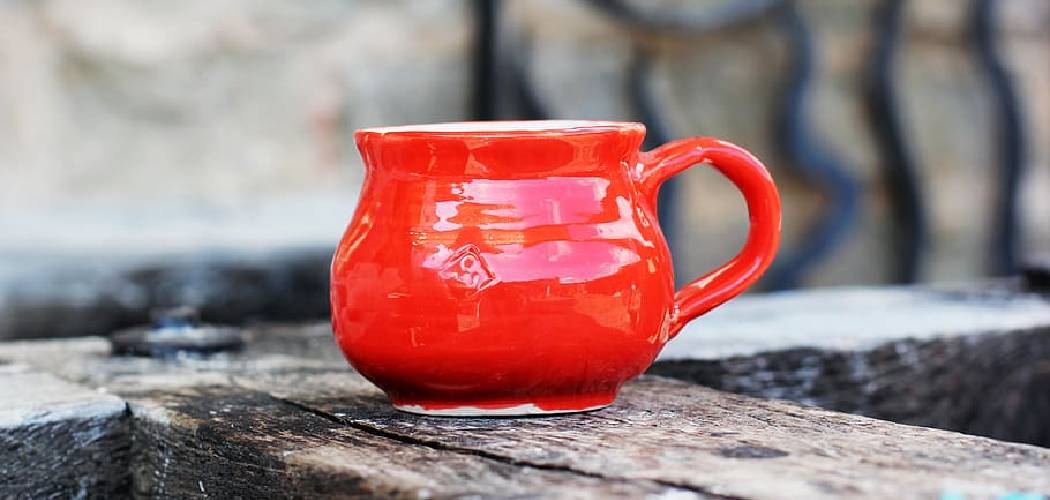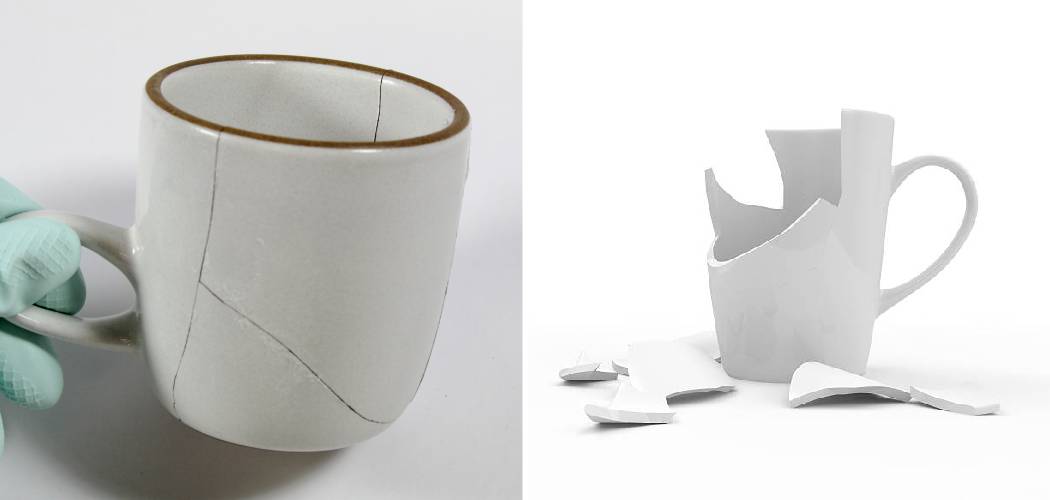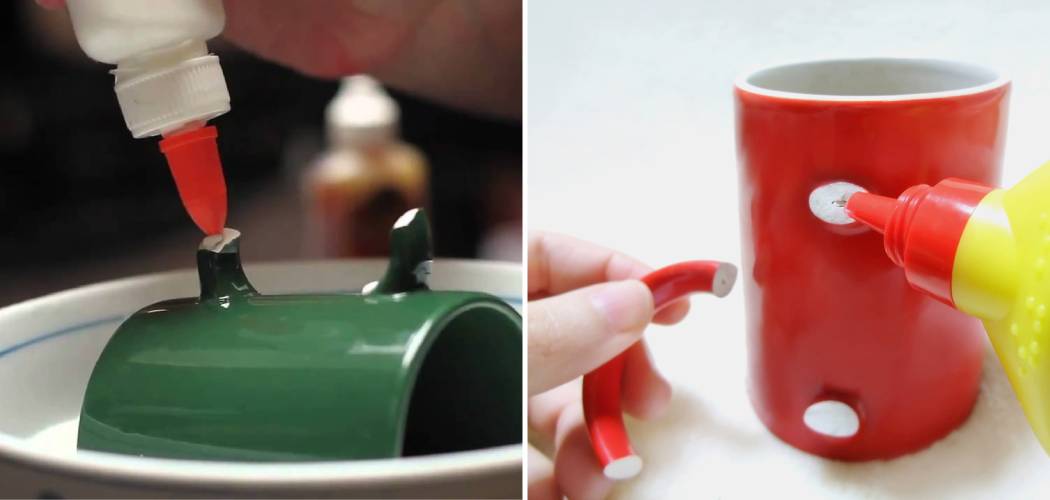Ceramic mugs are a common household item that many people use on a daily basis. Whether it’s for sipping your morning coffee or enjoying a cup of tea in the afternoon, ceramic mugs are a staple in many kitchens. However, over time, these mugs can become chipped and damaged, which not only affects their appearance but also their functionality. In this article, we will explore the importance of repairing chipped ceramic mugs and provide a step-by-step guide on how to fix chipped ceramic mug. We will also discuss the environmental benefits of repairing and repurposing these mugs instead of throwing them away.
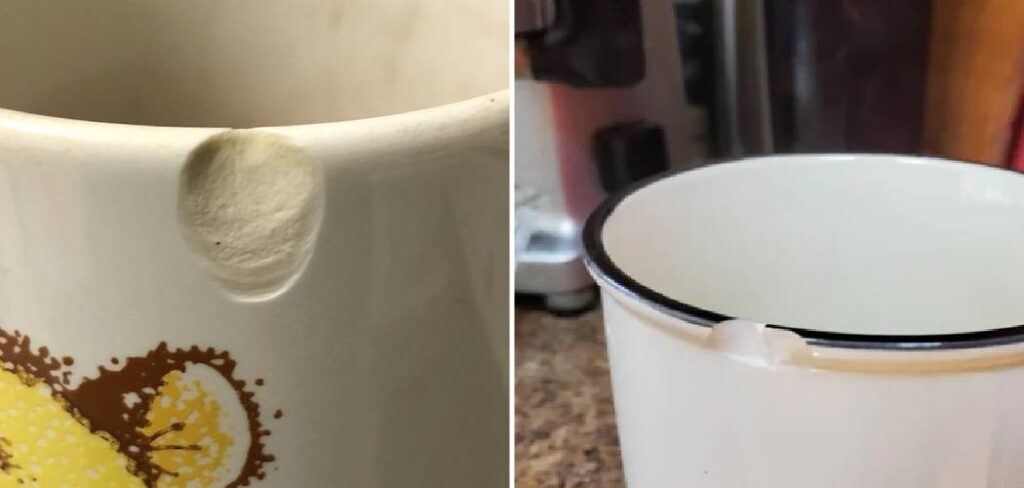
Table of Contents
Understanding the Causes of Chipped Ceramic Mugs
One of the first steps in repairing chipped ceramic mugs is understanding the causes of the damage. Common causes of chipping include dropping or hitting the mug against a hard surface, mishandling during washing or drying, and even thermal shock from sudden temperature changes. By understanding these causes, you can take steps to prevent future damage.
Dropping or hitting the mug is one of the most common causes of chipping. This can happen when you accidentally knock the mug off the table or when it slips out of your hand while washing it. To prevent this, it’s important to handle your ceramic mugs with care and avoid placing them near the edge of surfaces where they can easily be knocked over.
Mishandling during washing or drying can also lead to chipping. Using abrasive sponges or harsh cleaning chemicals can wear down the surface of the mug and make it more prone to chipping. It’s important to use gentle cleaning methods and avoid using anything that could scratch or damage the ceramic.
Thermal shock is another common cause of chipping in ceramic mugs. This occurs when there is a sudden change in temperature, such as pouring hot liquid into a cold mug or placing a hot mug on a cold surface. To prevent thermal shock, it’s important to gradually change the temperature of the mug by preheating it with hot water before pouring in hot liquids, and avoiding placing hot mugs on cold surfaces.
Assessing the Extent of the Damage: How Bad is the Chip?
Before attempting to repair a chipped ceramic mug, it’s important to assess the extent of the damage to determine if it is repairable or if the mug needs to be replaced. Minor chips that do not affect the functionality of the mug can often be repaired, while major chips or cracks may require a replacement.
Minor damage includes small chips or nicks on the rim or handle of the mug that do not affect its ability to hold liquid. These can often be repaired using simple DIY methods. Major damage includes large chips or cracks that make the mug unusable or pose a safety risk. In these cases, it is best to replace the mug.
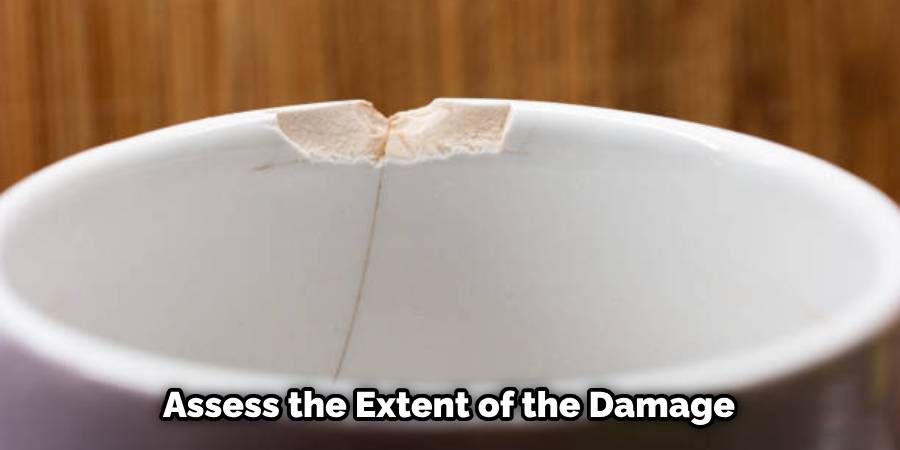
Tools and Materials You’ll Need for Ceramic Mug Repair
To repair chipped ceramic mugs, you will need a few tools and materials. These can be easily found at most hardware stores or online. Here is a list of what you will need:
1. Epoxy adhesive: This is a strong adhesive that is specifically designed for bonding ceramics. Make sure to choose an epoxy adhesive that is food-safe and waterproof.
2. Sandpaper: You will need sandpaper with different grits to smooth out the edges of the chip and prepare the surface for bonding.
3. Disposable gloves: It’s important to wear gloves to protect your hands from the adhesive and any sharp edges.
4. Toothpicks or small brushes: These will be used to apply the adhesive to the chip.
5. Clamps or rubber bands: These will be used to hold the chip in place while the adhesive dries.
6. Acetone or rubbing alcohol: This will be used to clean the surface of the mug before applying the adhesive.
10 Steps How to Fix Chipped Ceramic Mug
Step 1: Gather Your Materials
Before you begin the repair process, make sure you have all the necessary materials. You’ll need epoxy adhesive specifically designed for ceramics, masking tape, disposable gloves, a toothpick, fine-grit sandpaper, a small paintbrush, acrylic paint (matching the mug’s color), and a clear glaze for ceramics.
Step 2: Clean the Chip and Mug Surface
Thoroughly clean the chipped area of the mug using warm water and mild soap. This will remove any dirt, oils, or residues that could hinder the bonding process. Rinse and dry the mug completely.
Step 3: Prepare the Epoxy Adhesive
Put on disposable gloves to protect your hands. Mix the epoxy adhesive according to the manufacturer’s instructions. Usually, this involves combining equal parts of the resin and hardener on a clean surface. Use a toothpick to stir the mixture gently until it’s well combined.
Step 4: Apply Masking Tape
To ensure a neat repair job, apply masking tape around the edges of the chipped area. This will prevent any accidental spreading of epoxy adhesive onto the undamaged parts of the mug.
Step 5: Apply Epoxy Adhesive
Using the toothpick, carefully apply a thin layer of the mixed epoxy adhesive onto the chipped area. Make sure the adhesive fills the chip completely and levels with the surface of the mug. Avoid excess adhesive that could seep out.
Step 6: Align the Pieces
If the chip is substantial and you have the chipped-off piece, align it with the epoxy-covered area on the mug. Gently press the piece into place, making sure it fits snugly. If the chip is too small or lost, move on to the next step.
Step 7: Let It Cure
Allow the epoxy adhesive to cure as per the manufacturer’s instructions. This usually takes several hours or overnight. Place the mug on a clean, flat surface in a dust-free environment while it cures.
Step 8: Sand the Repaired Area
Once the epoxy is fully cured, remove the masking tape. Use fine-grit sandpaper to carefully sand down any excess epoxy adhesive until the repaired area is smooth and flush with the mug’s surface. Take care not to scratch the surrounding area.
Step 9: Paint and Glaze
If the chipped area is still visible or if the mug’s color is uneven due to the repair, you can use acrylic paint to match the mug’s color. Apply a small amount of paint to a fine paintbrush and carefully blend it with the rest of the mug’s surface. Allow the paint to dry completely.
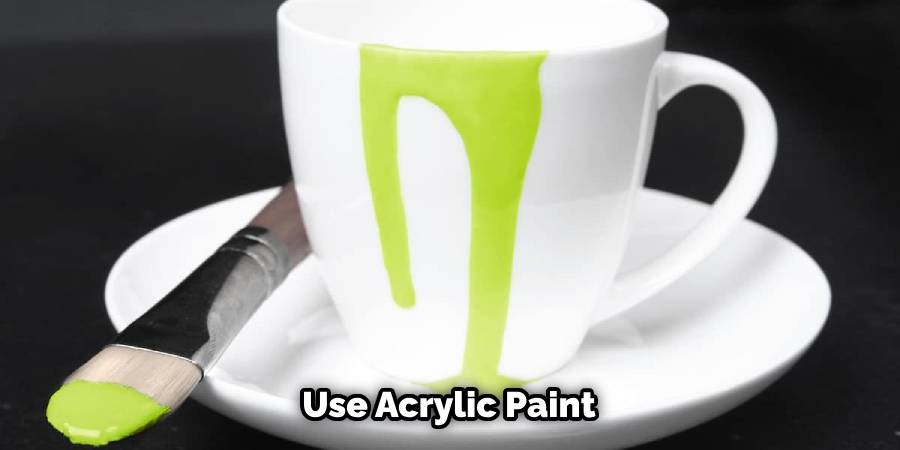
After the paint has dried, apply a thin layer of clear glaze to the repaired area using a small paintbrush. This will provide a protective layer and help blend the repaired section with the rest of the mug.
Step 10: Final Touches
Inspect the repaired area to ensure that it’s smooth, properly colored, and well-glazed. Clean any paint or glaze that may have gotten onto the undamaged parts of the mug. Once you’re satisfied with the repair, allow the mug to dry for an additional 24 hours before using or washing it.
Tips for Preventing Future Chips and Cracks in Ceramic Mugs
While repairing chipped ceramic mugs is a great way to extend their lifespan, it’s also important to take steps to prevent future damage. Here are some tips to help you prevent chips and cracks in your ceramic mugs:
1. Handle with care: Always handle your ceramic mugs with care and avoid dropping or hitting them against hard surfaces.
2. Use gentle cleaning methods: Avoid using abrasive sponges or harsh cleaning chemicals that can wear down the surface of the mug. Instead, use a soft sponge or cloth and mild dish soap to clean your mugs.
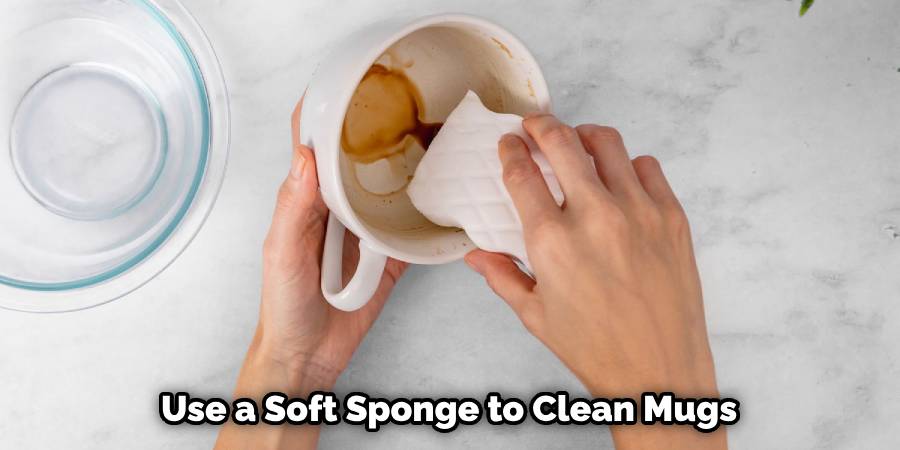
3. Avoid thermal shock: Gradually change the temperature of your ceramic mugs by preheating them with hot water before pouring in hot liquids. Also, avoid placing hot mugs on cold surfaces.
4. Store properly: When not in use, store your ceramic mugs in a safe place where they won’t be knocked over or damaged.
How to Clean and Care for Repaired Ceramic Mugs
Once you have repaired your chipped ceramic mugs, it’s important to clean and care for them properly to maintain the repair over time. Here are some tips to help you:
1. Hand wash: To avoid putting stress on the repaired area, it’s best to hand wash your repaired ceramic mugs instead of using a dishwasher.
2. Use gentle cleaning methods: As mentioned earlier, use a soft sponge or cloth and mild dish soap to clean your repaired mugs. Avoid using abrasive sponges or harsh cleaning chemicals that can damage the repair.
3. Avoid extreme temperatures: While the adhesive used for repairs is usually heat-resistant, it’s best to avoid exposing your repaired mugs to extreme temperatures. This can help prolong the lifespan of the repair.
4. Store properly: When not in use, store your repaired ceramic mugs in a safe place where they won’t be knocked over or damaged.
When to Seek Professional Help for Ceramic Mug Repair
While repairing chipped ceramic mugs can be done at home, there may be situations where it is best to seek professional help. Here are some instances where professional help may be necessary:
1. Severe damage: If the chip or crack is too severe or poses a safety risk, it is best to replace the mug instead of attempting to repair it.
2. Limited DIY skills: If you are not confident in your DIY skills or have never attempted a ceramic mug repair before, it may be best to seek professional help to ensure a proper and durable repair.
3. Valuable or sentimental mugs: If the mug has sentimental value or is a valuable antique, it is best to consult with a professional to ensure the repair is done correctly and does not devalue the item.
When seeking professional help for ceramic mug repair, it’s important to find a reputable repair service. Ask for recommendations from friends or family, or do some research online to find a service with positive reviews and experience in ceramic repairs.
Creative Ways to Repurpose Chipped Ceramic Mugs
Instead of throwing away chipped ceramic mugs, there are many creative ways to repurpose them and give them a new life. Here are some ideas for DIY projects and crafts using chipped ceramic mugs:
1. Planters: Use chipped ceramic mugs as planters for small succulents or herbs. The chip can add a unique and rustic touch to your indoor or outdoor garden.
2. Pencil holders: Use chipped ceramic mugs as pencil holders on your desk or in your art studio. The chip can add character and charm to your workspace.
3. Candle holders: Place a small candle inside a chipped ceramic mug to create a unique and cozy candle holder. The chip can create interesting patterns of light when the candle is lit.
4. Toothbrush holders: Use chipped ceramic mugs as toothbrush holders in your bathroom. The chip can add a touch of whimsy to your daily routine.
5. Decorative vases: Fill a chipped ceramic mug with fresh or dried flowers to create a decorative vase. The chip can add a rustic and natural look to your floral arrangements.
The Environmental Benefits of Repairing Ceramic Mugs Instead of Replacing Them
Repairing and repurposing chipped ceramic mugs instead of throwing them away has several environmental benefits. Here are some reasons why repairing ceramic mugs is a more sustainable option:
1. Reduces waste: By repairing chipped ceramic mugs, you are preventing them from ending up in landfills and contributing to the growing waste problem.
2. Saves resources: Repairing and repurposing ceramic mugs reduces the demand for new products, which saves resources such as energy, water, and raw materials that would be used in the manufacturing process.
3. Decreases carbon emissions: The production and transportation of new ceramic mugs contribute to carbon emissions and climate change. By repairing and repurposing existing mugs, you are reducing the need for new products and the associated carbon emissions.
4. Promotes a circular economy: Repairing and repurposing chipped ceramic mugs is a key principle of the circular economy, which aims to minimize waste and maximize the use of resources.
Conclusion
Repairing chipped ceramic mugs is not only a practical way to extend their lifespan but also a sustainable choice that helps reduce waste and save resources. By understanding the causes of chipping and taking steps to prevent future damage, you can keep your ceramic mugs in good condition for years to come. With the right tools and materials, repairing small chips or cracks in ceramic mugs can be done at home with ease.
And if you’re feeling creative, there are many ways to repurpose chipped ceramic mugs and give them a new life. Follow these simple instructions outlined in this blog post about how to fix chipped ceramic mug, and you’ll be able to get the job done with ease.
